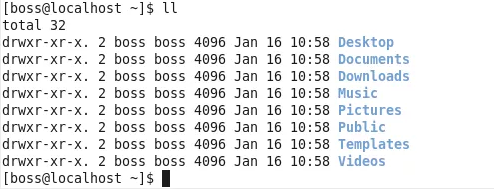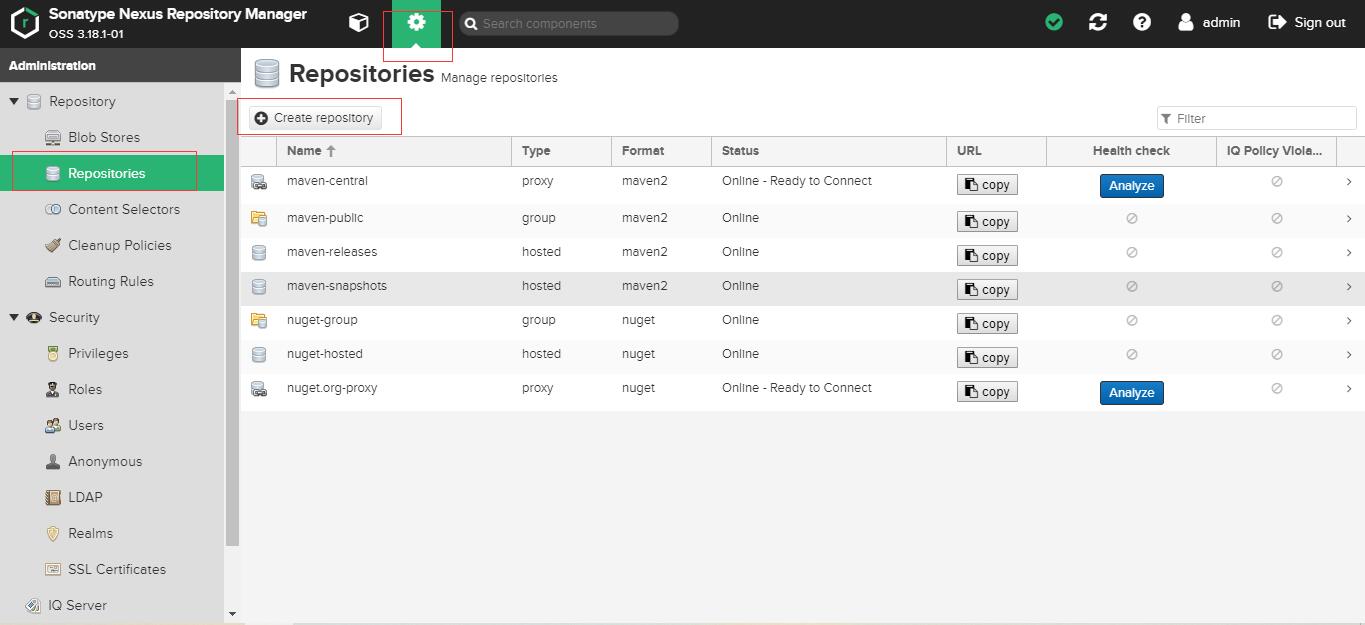是否有设置一个更简单的方法比什么描述先发制人基本验证HTTP客户端在这里 ?
在以前的版本(3.X),它使用的是一个简单的方法调用(例如, httpClient.getParams().setAuthenticationPreemptive(true) )。
我想避免的主要问题是添加BasicHttpContext给我执行每个方法。
Answer 1:
这是很难做到这一点没有通过上下文通过每一次,但你也许可以通过使用请求拦截做到这一点。 下面是一些代码,我们使用(从他们的JIRA发现,IIRC):
// Pre-emptive authentication to speed things up
BasicHttpContext localContext = new BasicHttpContext();
BasicScheme basicAuth = new BasicScheme();
localContext.setAttribute("preemptive-auth", basicAuth);
httpClient.addRequestInterceptor(new PreemptiveAuthInterceptor(), 0);
(...)
static class PreemptiveAuthInterceptor implements HttpRequestInterceptor {
public void process(final HttpRequest request, final HttpContext context) throws HttpException, IOException {
AuthState authState = (AuthState) context.getAttribute(ClientContext.TARGET_AUTH_STATE);
// If no auth scheme avaialble yet, try to initialize it
// preemptively
if (authState.getAuthScheme() == null) {
AuthScheme authScheme = (AuthScheme) context.getAttribute("preemptive-auth");
CredentialsProvider credsProvider = (CredentialsProvider) context.getAttribute(ClientContext.CREDS_PROVIDER);
HttpHost targetHost = (HttpHost) context.getAttribute(ExecutionContext.HTTP_TARGET_HOST);
if (authScheme != null) {
Credentials creds = credsProvider.getCredentials(new AuthScope(targetHost.getHostName(), targetHost.getPort()));
if (creds == null) {
throw new HttpException("No credentials for preemptive authentication");
}
authState.setAuthScheme(authScheme);
authState.setCredentials(creds);
}
}
}
}
Answer 2:
如果您正在寻找强制HttpClient的4单个请求进行身份验证,下面的工作:
String username = ...
String password = ...
UsernamePasswordCredentials creds = new UsernamePasswordCredentials(username, password);
HttpRequest request = ...
request.addHeader(new BasicScheme().authenticate(creds, request));
Answer 3:
这是相同的解决方案垫的曼尼恩的,但你不必把localContext每个请求。 所以,很简单,但它增加了认证的所有要求。 有用的,如果你使用Apache Solr实现,它使用HttpClient的内部时,并没有对个人要求的控制,在我的情况。
import org.apache.http.HttpException;
import org.apache.http.HttpHost;
import org.apache.http.HttpRequest;
import org.apache.http.HttpRequestInterceptor;
import org.apache.http.auth.AuthScope;
import org.apache.http.auth.AuthState;
import org.apache.http.auth.Credentials;
import org.apache.http.client.CredentialsProvider;
import org.apache.http.client.protocol.ClientContext;
import org.apache.http.impl.auth.BasicScheme;
import org.apache.http.protocol.ExecutionContext;
import org.apache.http.protocol.HttpContext;
httpClient.addRequestInterceptor(new PreemptiveAuthInterceptor(), 0);
(...)
static class PreemptiveAuthInterceptor implements HttpRequestInterceptor {
public void process(final HttpRequest request, final HttpContext context) throws HttpException, IOException {
AuthState authState = (AuthState) context.getAttribute(ClientContext.TARGET_AUTH_STATE);
// If no auth scheme available yet, try to initialize it
// preemptively
if (authState.getAuthScheme() == null) {
CredentialsProvider credsProvider = (CredentialsProvider) context.getAttribute(ClientContext.CREDS_PROVIDER);
HttpHost targetHost = (HttpHost) context.getAttribute(ExecutionContext.HTTP_TARGET_HOST);
Credentials creds = credsProvider.getCredentials(new AuthScope(targetHost.getHostName(), targetHost.getPort()));
if (creds == null) {
throw new HttpException("No credentials for preemptive authentication");
}
authState.setAuthScheme(new BasicScheme());
authState.setCredentials(creds);
}
}
}
当然,你必须设置凭据提供:
httpClient.getCredentialsProvider().setCredentials(
new AuthScope(url.getHost(), url.getPort()),
new UsernamePasswordCredentials(username, password))
该AuthScope不能包含的境界,因为它是事先不知道。
Answer 4:
很多上面使用的答案过时代码。 我使用Apache SOLRJ版本5.0.0。 我的代码由
private HttpSolrClient solrClient;
private void initialiseSOLRClient() {
URL solrURL = null;
try {
solrURL = new URL(urlString);
} catch (MalformedURLException e) {
LOG.error("Cannot parse the SOLR URL!!" + urlString);
throw new SystemException("Cannot parse the SOLR URL!! " + urlString, e);
}
String host = solrURL.getHost();
int port = solrURL.getPort();
AuthScope authScope = new AuthScope(host, port);
BasicTextEncryptor textEncryptor = new BasicTextEncryptor();
textEncryptor.setPassword("red bananas in the spring");
String decryptPass = textEncryptor.decrypt(pass);
UsernamePasswordCredentials creds = new UsernamePasswordCredentials(userName, decryptPass);
CredentialsProvider credsProvider = new BasicCredentialsProvider();
credsProvider.setCredentials(
authScope,
creds);
HttpClientBuilder builder = HttpClientBuilder.create();
builder.addInterceptorFirst(new PreemptiveAuthInterceptor());
builder.setDefaultCredentialsProvider(credsProvider);
CloseableHttpClient httpClient = builder.build();
solrClient = new HttpSolrClient(urlString, httpClient);
}
该PreemptiveAuthInterceptor现在是如下: -
static class PreemptiveAuthInterceptor implements HttpRequestInterceptor {
public void process(final HttpRequest request, final HttpContext context) throws HttpException, IOException {
AuthState authState = (AuthState) context.getAttribute(HttpClientContext.TARGET_AUTH_STATE);
// If no auth scheme available yet, try to initialize it
// preemptively
if (authState.getAuthScheme() == null) {
CredentialsProvider credsProvider = (CredentialsProvider)
context.getAttribute(HttpClientContext.CREDS_PROVIDER);
HttpHost targetHost = (HttpHost) context.getAttribute(HttpCoreContext.HTTP_TARGET_HOST);
AuthScope authScope = new AuthScope(targetHost.getHostName(), targetHost.getPort());
Credentials creds = credsProvider.getCredentials(authScope);
if(creds == null){
}
authState.update(new BasicScheme(), creds);
}
}
}
Answer 5:
有点晚了党,但我来到翻过线程试图解决这个问题的一个POST请求的代理预授权。 要添加到亚当的回应,我发现我下面的工作:
HttpPost httppost = new HttpPost(url);
UsernamePasswordCredentials creds = new UsernamePasswordCredentials(username, password);
Header bs = new BasicScheme().authenticate(creds, httppost);
httppost.addHeader("Proxy-Authorization", bs.getValue());
原以为可能是其他人谁运行到这很有帮助。
Answer 6:
我认为最好的办法可能只是做手工。 我增加了以下功能
经典的Java:
import javax.xml.bind.DatatypeConverter;
...
private static void addAuthHeader(HttpRequestBase http, String username, String password) throws UnsupportedEncodingException {
String encoded = DatatypeConverter.printBase64Binary((username + ":" + password).getBytes("UTF-8"));
http.addHeader("AUTHORIZATION", "Basic " + encoded);
}
HTTPRequestBase可以是一个实例HttpGet或HttpPost
安卓:
import android.util.Base64;
...
private static void addAuthHeader(HttpRequestBase http, String username, String password) throws UnsupportedEncodingException {
String encoded = Base64.encodeToString((username + ":" + password).getBytes("UTF-8"), Base64.NO_WRAP);
http.addHeader("AUTHORIZATION", "Basic " + encoded);
}
Answer 7:
我使用此代码,根据我的阅读HttpClient的4.5文档 :
HttpClientContext ctx = HttpClientContext.create()
ctx.setCredentialsProvider(new BasicCredentialsProvider())
ctx.setAuthCache(new BasicAuthCache())
UsernamePasswordCredentials creds = new UsernamePasswordCredentials(user, pass)
AuthScope authScope = new AuthScope(host, port)
ctx.getCredentialsProvider.setCredentials(authScope, credentials)
// This part makes authentication preemptive:
HttpHost targetHost = new HttpHost(host, port, scheme)
ctx.getAuthCache.put(targetHost, new BasicScheme())
...,并确保你总是传递上下文HTTPClient.execute()
Answer 8:
我不知道你这个结尾的注释。 它具有所有的机器做先发制人权威性的HttpClient和你只需要做,一旦(在构造和配置的HttpClient)。 一旦你这样做,你建立你的方法实例同样的方式一如既往。 你不“加BasicHttpContext”的方法。
你最好的选择,我倒是觉得,是有自己的对象,设置所有先发制人身份验证所需的垃圾,并具有给定的列举HTTPMethod对象执行请求的简单方法或方法。
Answer 9:
在Android中,垫曼尼恩的回答无法解决HTTPS,仍然发送两个请求,你能做到像下面,关键是与用户代理追加authHeader:
public static DefaultHttpClient createProxyHttpClient() {
try {
final DefaultHttpClient client = createPlaintHttpClient();
client.setRoutePlanner(new HttpRoutePlanner() {
@Override
public HttpRoute determineRoute(HttpHost target, HttpRequest request, HttpContext context) throws HttpException {
boolean isSecure = "https".equalsIgnoreCase(target.getSchemeName());
if (needProxy) {
Header header = isSecure ? ProxyUtils.createHttpsAuthHeader() : ProxyUtils.createAuthHeader();
if (isSecure) {
client.getParams().setParameter(CoreProtocolPNames.USER_AGENT, com.netease.cloudmusic.utils.HttpRequest.USER_AGENT + "\r\n" + header.getName() + ":" + header.getValue());
} else {
client.getParams().setParameter(CoreProtocolPNames.USER_AGENT, com.netease.cloudmusic.utils.HttpRequest.USER_AGENT);
if (request instanceof RequestWrapper) {
request = ((RequestWrapper) request).getOriginal();
}
request.setHeader(header);
}
String host = isSecure ? ProxyUtils.SECURE_HOST : ProxyUtils.HOST;
int port = isSecure ? ProxyUtils.SECURE_PORT : ProxyUtils.PORT;
return new HttpRoute(target, null, new HttpHost(host, port), isSecure);
} else {
client.getParams().setParameter(CoreProtocolPNames.USER_AGENT, com.netease.cloudmusic.utils.HttpRequest.USER_AGENT);
return new HttpRoute(target, null, isSecure);
}
}
});
return client;
} catch (Exception e) {
e.printStackTrace();
return new DefaultHttpClient();
}
}
public static DefaultHttpClient createPlaintHttpClient() {
try {
KeyStore trustStore = KeyStore.getInstance(KeyStore.getDefaultType());
trustStore.load(null, null);
PlainSSLSocketFactory socketFactory = new PlainSSLSocketFactory(trustStore);
socketFactory.setHostnameVerifier(SSLSocketFactory.ALLOW_ALL_HOSTNAME_VERIFIER);
BasicHttpParams params = new BasicHttpParams();
HttpConnectionParams.setConnectionTimeout(params, 30000);
HttpConnectionParams.setSoTimeout(params, 30000);
HttpProtocolParams.setVersion(params, HttpVersion.HTTP_1_1);
HttpProtocolParams.setContentCharset(params, HTTP.UTF_8);
SchemeRegistry registry = new SchemeRegistry();
registry.register(new Scheme("http", PlainSocketFactory.getSocketFactory(), 80));
registry.register(new Scheme("https", socketFactory, 443));
ThreadSafeClientConnManager ccm = new ThreadSafeClientConnManager(params, registry);
HttpClientParams.setCookiePolicy(params, CookiePolicy.BROWSER_COMPATIBILITY);
final DefaultHttpClient client = new DefaultHttpClient(ccm, params);
client.setRoutePlanner(new HttpRoutePlanner() {
@Override
public HttpRoute determineRoute(HttpHost target, HttpRequest arg1, HttpContext arg2) throws HttpException {
client.getParams().setParameter(CoreProtocolPNames.USER_AGENT, com.netease.cloudmusic.utils.HttpRequest.USER_AGENT);
return new HttpRoute(target, null, "https".equalsIgnoreCase(target.getSchemeName()));
}
});
return client;
} catch (Exception e) {
e.printStackTrace();
return new DefaultHttpClient();
}
}





